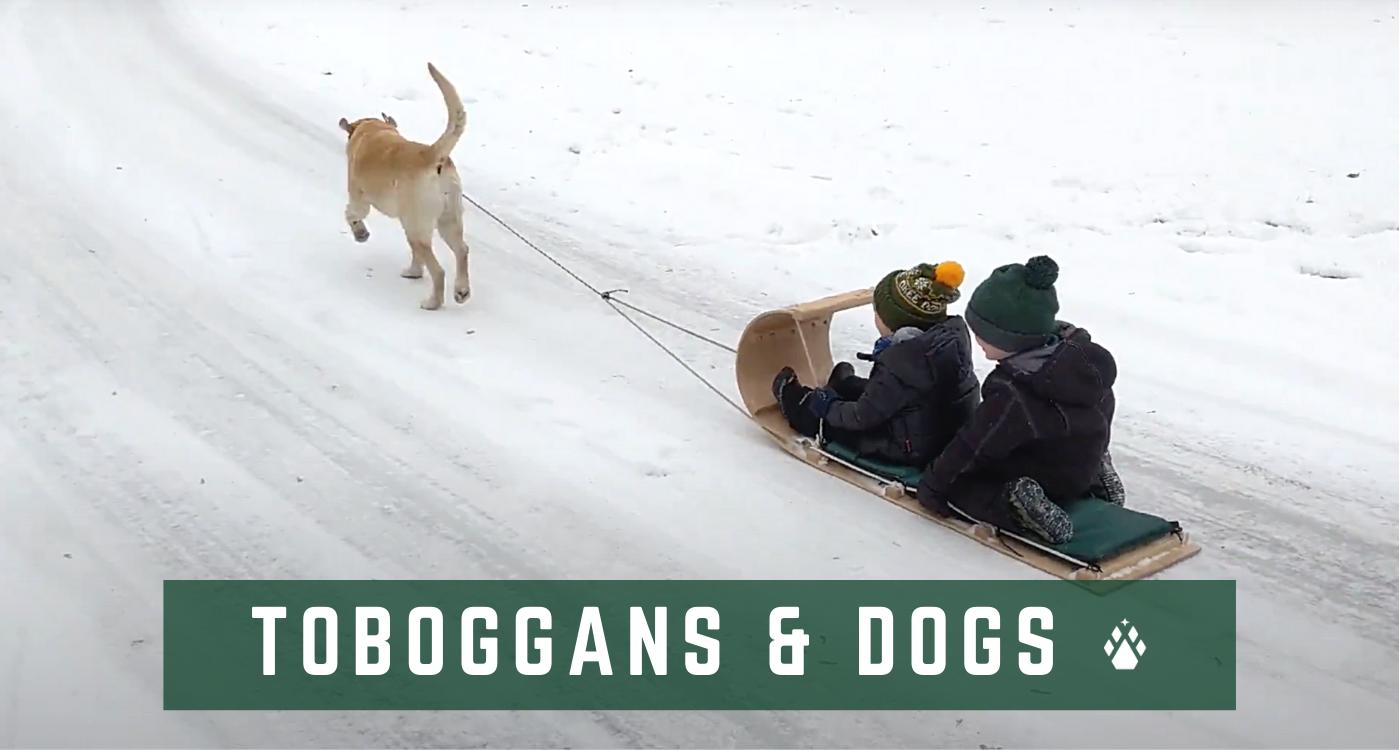Toboggans and Dogs: The Third Wheel in Man’s Oldest Friendship
When you look into those beautiful blue eyes or brown eyes, or for some that one blue eye and one brown eye and you see the love reflected back to you, the full meaning of man’s best friend can’t be denied. Our furry friends have been around for centuries providing companionship, service, assistance, and, in our darkest hours, even food. The relationship between dog and man has a long and rich history.
Historical Findings
Until fairly recently, dog sledding was a necessary means of travel for communities in the arctic. With the invention of airplanes, snowmobiles and snowcats, however, all of that has changed. But still, there is something alluring about dogs and toboggans working together.
Far north excavation sites in Siberia have revealed canine burials as far back as 8,000 years. Because the dogs were buried with jewelry and sometimes presumably with their masters, we can assume that they held a special place with humans. Move forward another 6,000 years and we learn of the earliest depiction of a sled dog.
In the Siberian Arctic, at a 2,000 year-old site known as Ust’-Polui, archeologists uncovered the largest collection of dog bones ever found in a far north excavation. The remains of over 100 dogs were recovered. Many had apparently been served up as dinner, but others seemed to have been used for transportation. Remnants of sleds have also been uncovered at Ust’-Polui, though other than the depiction of a sled dog, remains of harnesses have not been found.
A feeling in your bones?
So how do we know for sure that dog’s have always pulled toboggans? It seems like there are some gaps in the evidence. But, by looking at the bones of sled dogs and comparing them to those found at excavation sites, scientists have been able to fill in some of those holes.
Remains from various dogs, including sled dogs that Robert E. Peary used in his expedition to Greenland in the 1800s, were compared with wolves, modern suburban dogs, and dog’s from historic Inuit communities. The study revealed distinctive differences in the bone structures of the different animals.
Sled dogs are powerful, vigorous, and highly skilled when it comes to running while hauling. After spending generations pulling heavy weight, their bone structure starts to morph. the hauling they do shows up in shorter, more robust bones. Essentially, they are the canine equivalent of long-distance runners or olympic weight-lifters, and athletes.
An Ancient Friendship
The history of friendship between human and canine is a long one. They have been many things to us, but above all, they have been solid companions. Nowadays toboggans are used mainly for recreation and sport and our dependence on sled dogs for transportation has disappeared. Still, there is something that lives on in that relationship. If you’ve ever seen a dog run alongside a snowmobile or chase after two kids on a downhill toboggan, it makes you wonder. We haven’t forgotten; maybe they haven’t either?

